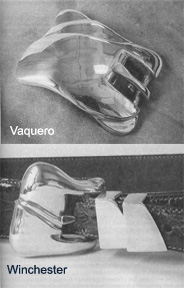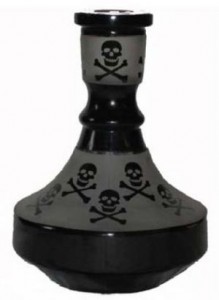You may already know by reading this newsletter that utilitarian objects are typically not protected by copyright law. Fashion designs are but one controversial example. Here’s a little more history. In the 1950’s, the Supreme Court of the United States in Mazer v. Stein, held that statuettes incorporated into lamps – unarguably utilitarian objects – were the proper subject of copyright protection in so much as the artistic component (the statue) was separable from its utilitarian function (the lamp).
Of course, it’s not always easy to separate the artistic from the utilitarian components of an object. The U.S. Court of Appeals wrestled with the problem in Kieselstein-Cord v. Accessories by Pearl, Inc., when it considered whether artistically embellished belt buckles were subject to copyright protection. The court recognized that although belt buckles were “merely useful objects,” the decorative features characteristic of the buckles being litigated rendered them something more than just useful objects. In fact, the court wrote that the original ornamentation of the buckles was conceptually separable from their useful qualities and, therefore, deserved copyright protection.
This conclusion does not apply to any belt buckle and probably not the one your wearing unless it meets the basic requirement of originality and creativity inherent in a work of art.
Fast forward a few decades and the question arises again but this time between makers of smoking paraphernalia (presumably tobacco but times are a changing). In this case — Inhale, Inc. v. Starbuzz Tobacco — Inhale sued Starbuzz for infringing its copyright in the distinctive shape of its skull and cross-bones adorned hookah water container.
The question was whether Inhale owned a valid copyright. The court, agreeing with the defendant, thought not. The issue again was whether the artistic work was either physically or conceptually separable from the utilitarian nature of the piece. Since both parties had to agree that a hookah bottle was a “useful article,” the court looked to whether there was “conceptual” separability. The court relied in part on a previous decision that the shape of a vodka bottle was not separable from its utilitarian features (Ets-Hokins v. Skyy Spirits Inc.). The judge wrote that even though the water bottle had a distinctive shape – much like a sculpture – its shape could not be independent of its utilitarian function “because the shape accomplishes the function” (i.e., holding water). So, no copyright protection and, even worse, the court awarded the defendant over a $100,000 in attorneys fees for having to defend a frivolous lawsuit. Put that in your pipe and smoke it…..
— Adam G. Garson, Esq.





